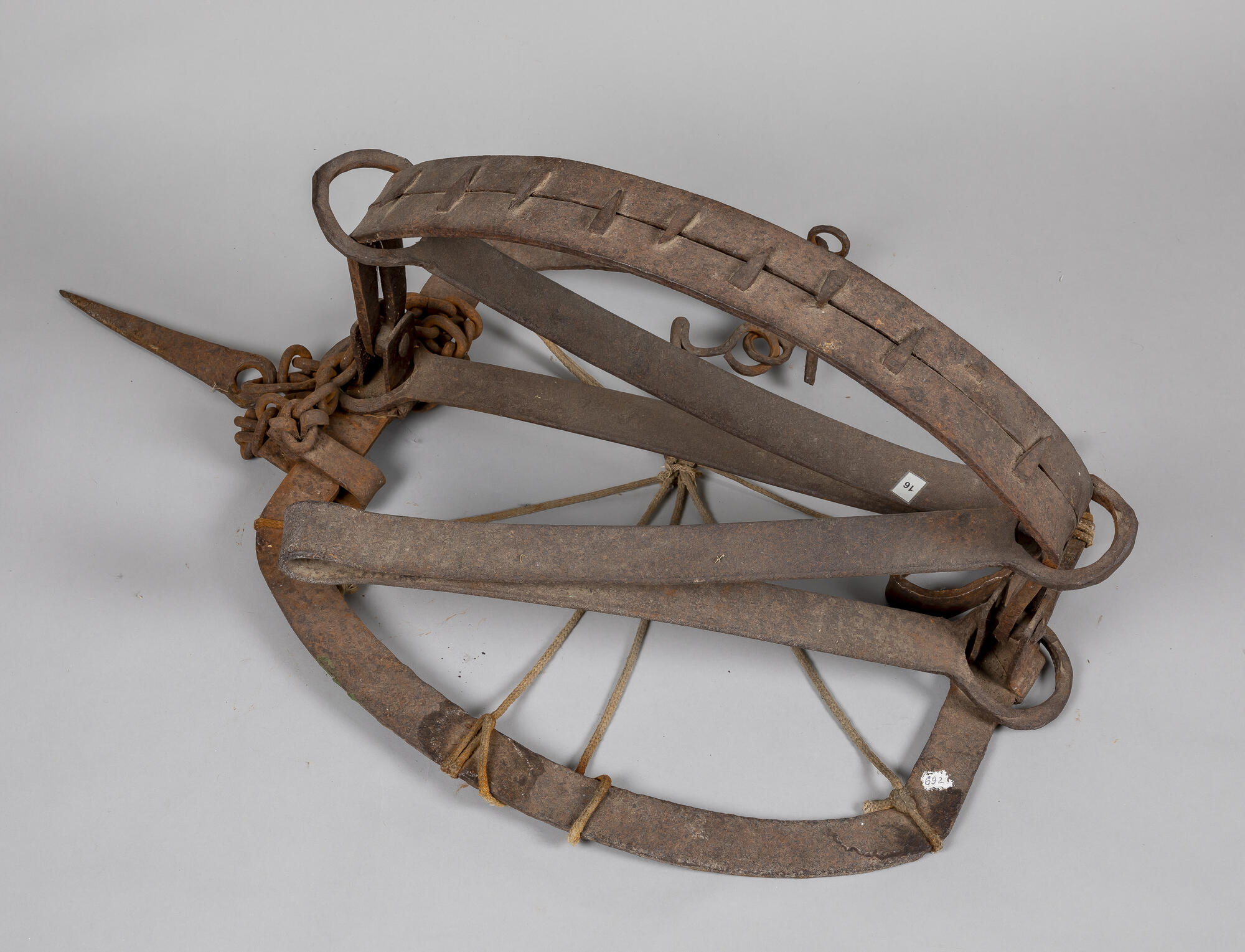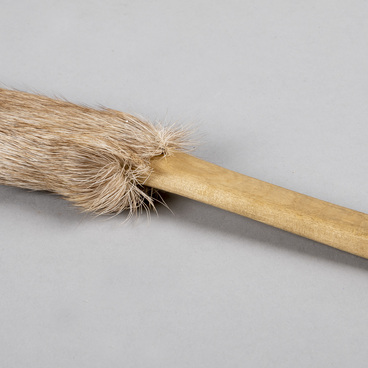The Khanty and Mansi were allowed to hunt bears, but after that the hunter was obliged to perform a certain ritual. Most often, catching the bear involved the use of traps. They were hunted only during autumn, since during spring and summer the animals bear and feed their offspring. A trap could also be set in winter for catching bears who continue roaming the forest during hibernation season.
A bear is a large animal, so the trap has to be strong and heavy. Such traps feature powerful springs weighing more than ten kilograms. The edges of the iron arcs called jaws have a sharp jagged edge. Such jaws are very practical because they grip the paw of the captured bear twice as hard as those with blunt and smooth edges.
The way it works is simple. The jaws of the trap are pushed apart, and one of them is clamped to the base with a hook, to which a piece of rotten meat is tied with a rope. The bear grabs the bait, the hook releases the jaw, which then slams on the animal’s paw.
Leaves, pine needles, and moss are used to cover up the trap.
The two jaws with nine teeth of a flattened oval shape are the main part of this trap.
Such traps were most likely made at Ural factories and bought or exchanged by Khanty hunters at local fairs. The trap on display was purchased at the Surgut or Yugansk fair. Traps like this have not been used since the 19th century.






